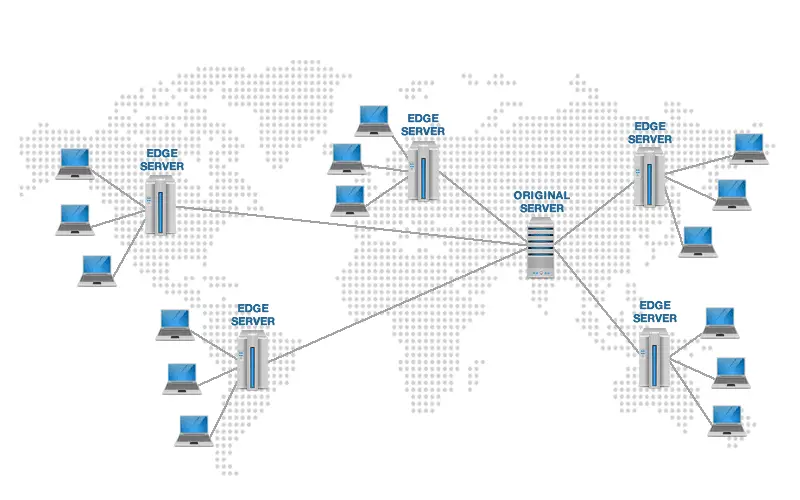Content Delivery Networks (CDNs) and Mobile Apps: Enhancing User Experience

In the era of digitalization, mobile apps have become essential for businesses to engage with their customers. However, delivering seamless and efficient app experiences across various platforms and regions can be a challenge. This is where content delivery networks (CDNs) come into play.

What is a CDN?

A CDN is a globally distributed network of servers that helps deliver content quickly and efficiently to end-users. By caching and delivering content from servers located closest to the user, CDNs reduce latency and improve loading times.
Benefits of Using a CDN for Mobile Apps:
- Reduced Latency: CDNs minimize the distance between the user and the content, resulting in faster app load times and improved responsiveness.
- Increased Performance: By serving content from multiple servers, CDNs distribute the load, ensuring optimal performance even during peak usage.
- Enhanced Availability: CDNs provide redundancy and failover capabilities, ensuring that content remains accessible in the event of server outages.
- Reduced Bandwidth Costs: CDNs cache frequently accessed content, reducing the amount of data transferred over the network and saving bandwidth costs for businesses.
- Improved Security: CDNs offer security features such as DDoS protection and SSL encryption, safeguarding app data and protecting users from malicious attacks.
Integration of CDNs into Mobile Apps:
Integrating a CDN into a mobile app involves the following steps:
- CDN Selection: Choose a CDN that provides global coverage, supports mobile protocols, and offers the necessary features for your app.
- CDN Configuration: Set up the CDN by creating a distribution point, providing the origin server information, and configuring cache settings.
- App Integration: Update the app’s code to use the CDN’s URL for serving content, such as images, videos, and scripts.
- Monitoring and Analytics: Track and analyze CDN performance metrics to ensure optimal delivery and identify areas for improvement.
Best Practices for CDN Optimization:
- Use a CDN that supports HTTP/2 and QUIC protocols for improved performance.
- Implement Brotli or GZIP compression to reduce the size of content delivered.
- Set appropriate cache headers for static and dynamic content to maximize cache efficiency.
- Monitor CDN performance regularly and make adjustments as needed to optimize delivery.
Conclusion
By leveraging CDNs, mobile app developers can ensure fast, reliable, and secure delivery of content across all platforms. CDNs not only enhance the user experience but also help businesses optimize bandwidth costs, improve performance, and strengthen security. Implementing a CDN is an essential strategy for delivering exceptional mobile app experiences that meet the demands of today’s digital users.## CDN and Mobile Apps: Ensuring Speed and Efficiency Across All Platforms
Executive Summary
Content delivery networks (CDNs) play a vital role in optimizing the performance of mobile applications by delivering content quickly and efficiently. This comprehensive article explores the benefits and implementation strategies of CDN for mobile apps.
Introduction
In today’s digital landscape, the speed and reliability of mobile applications are paramount. CDNs have emerged as a key enabler for delivering seamless user experiences across diverse platforms and network conditions. By leveraging a distributed network of servers, CDNs reduce latency, improve load balancing, and enhance overall app performance.
FAQs
Q1: What are the primary benefits of using CDN for mobile apps?
Q2: How does CDN integration impact user experience and engagement?
Q3: What are the technical considerations for implementing CDN in mobile applications?
CDN for Mobile Apps: Subtopics
1. Performance Optimization
- Reduces latency by caching static content closer to users
- Improves load times and reduces buffering
- Enhances overall user engagement and satisfaction
2. Content Delivery Efficiency
- Distributes content across multiple servers to balance load
- Optimizes bandwidth utilization and reduces network congestion
- Ensures high availability and reliability for mobile apps
3. Security Enhancement
- Protects against DDoS attacks by distributing traffic across multiple servers
- Implements SSL certificates for secure content delivery
- Enforces access control and content restriction policies
4. Cost Optimization
- Reduces bandwidth costs by caching frequently requested content
- Optimizes network resources and reduces data transfer fees
- Provides cost-effective scalability for growing mobile apps
5. Globalization and Localization
- Enables global content delivery with reduced latency
- Supports multiple languages and localized content for global reach
- Facilitates regional data privacy compliance and regulations
Conclusion
CDN integration is essential for optimizing the speed, efficiency, and security of mobile applications. By leveraging the benefits described above, developers can create seamless and engaging user experiences that drive app adoption, engagement, and profitability. Implementing CDN strategies empowers mobile apps to perform optimally across diverse platforms and network conditions, ensuring reliable and satisfactory user interactions.
Keywords
- CDN for Mobile Apps
- Content Delivery Network
- Mobile App Performance
- User Experience Optimization
- Security and Reliability
